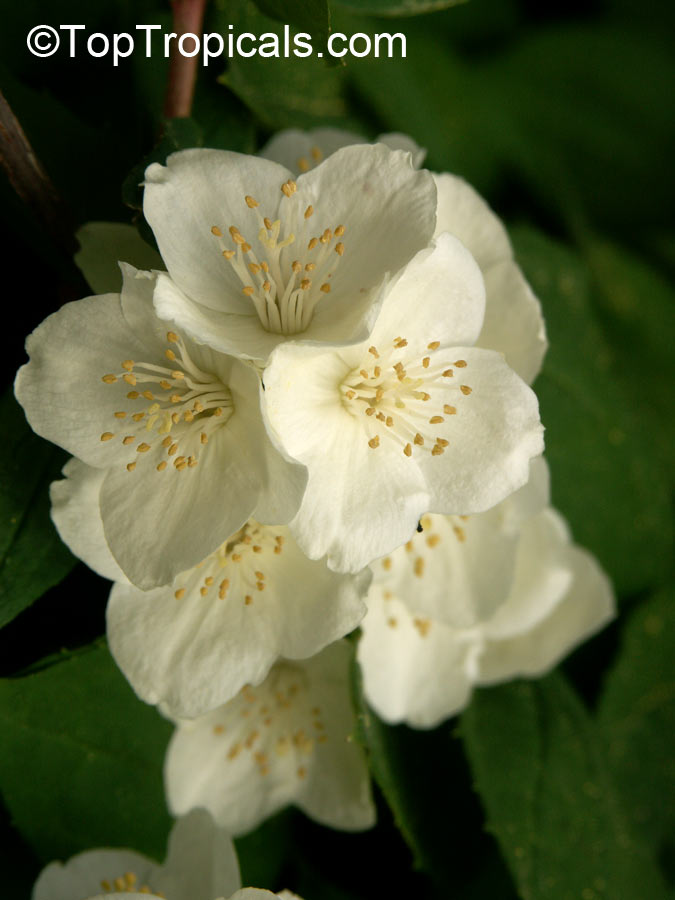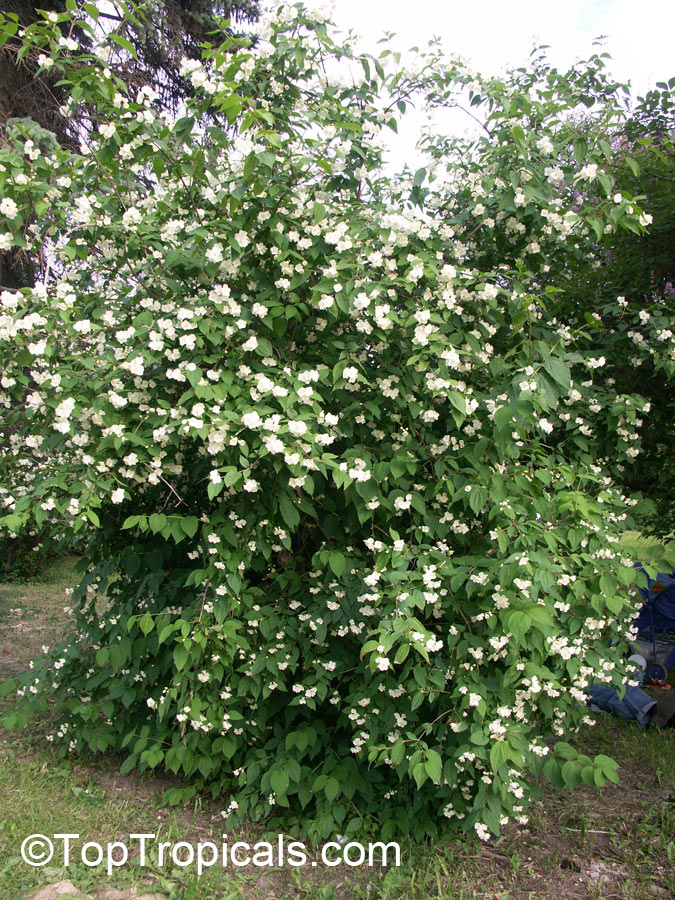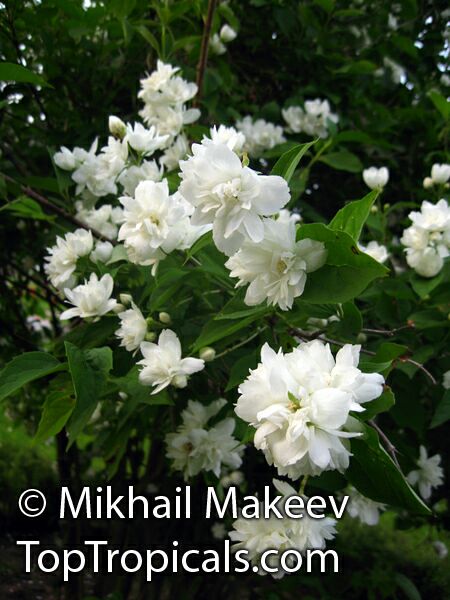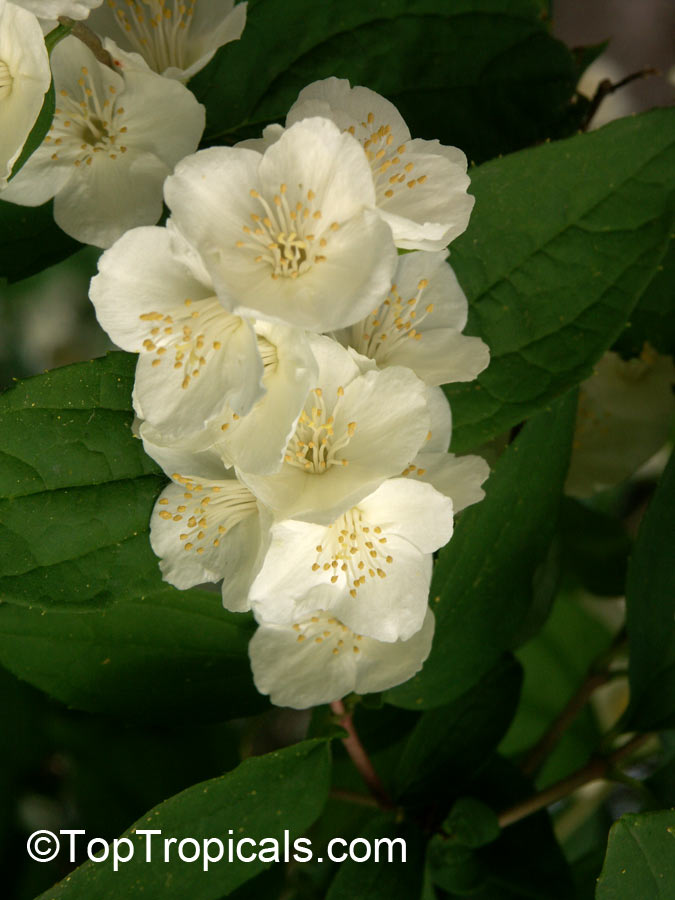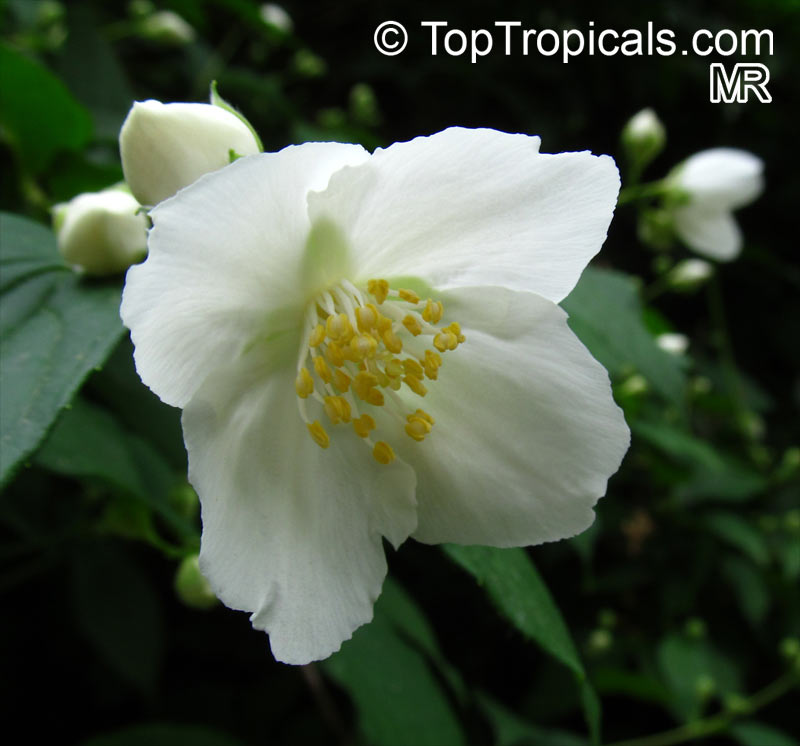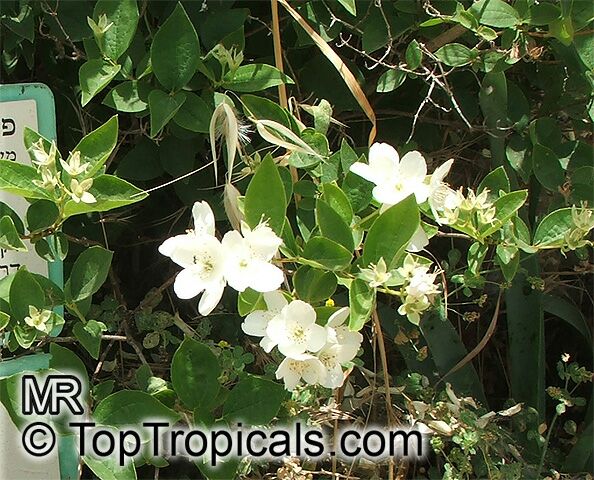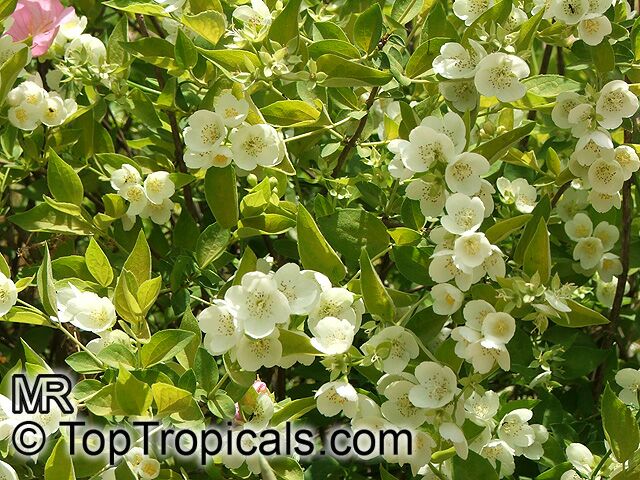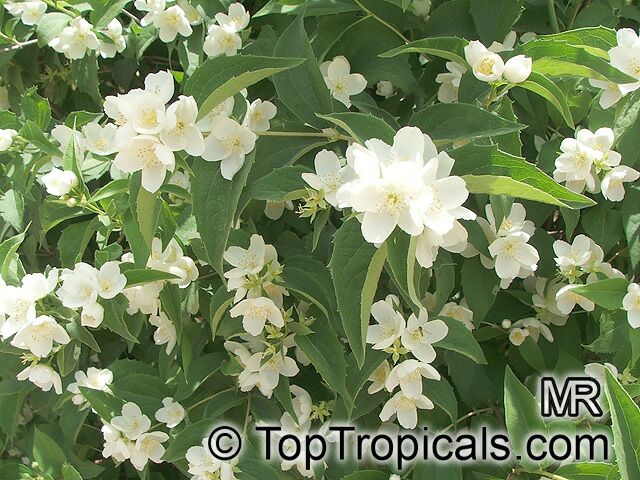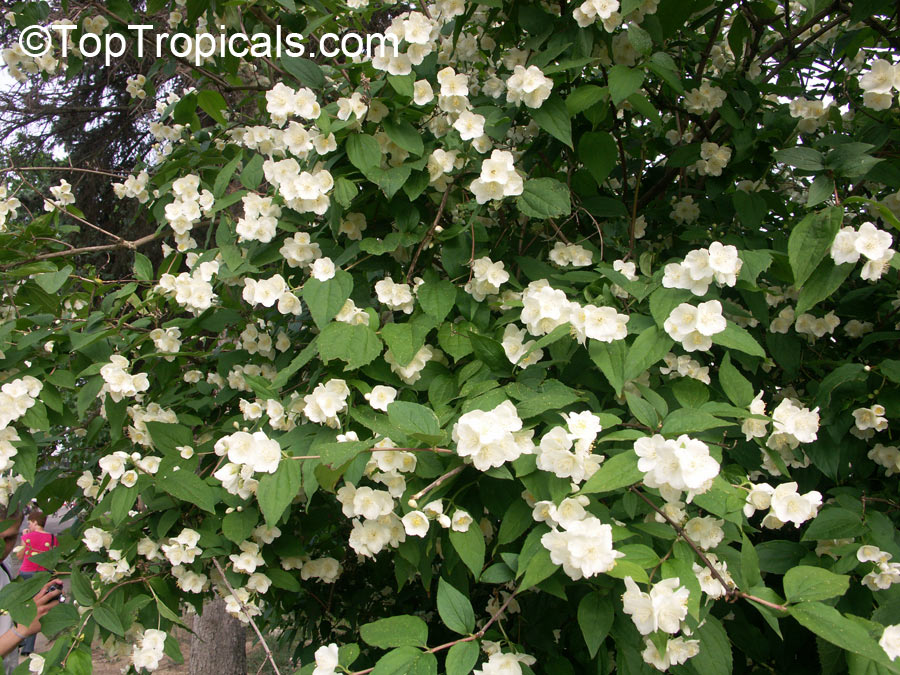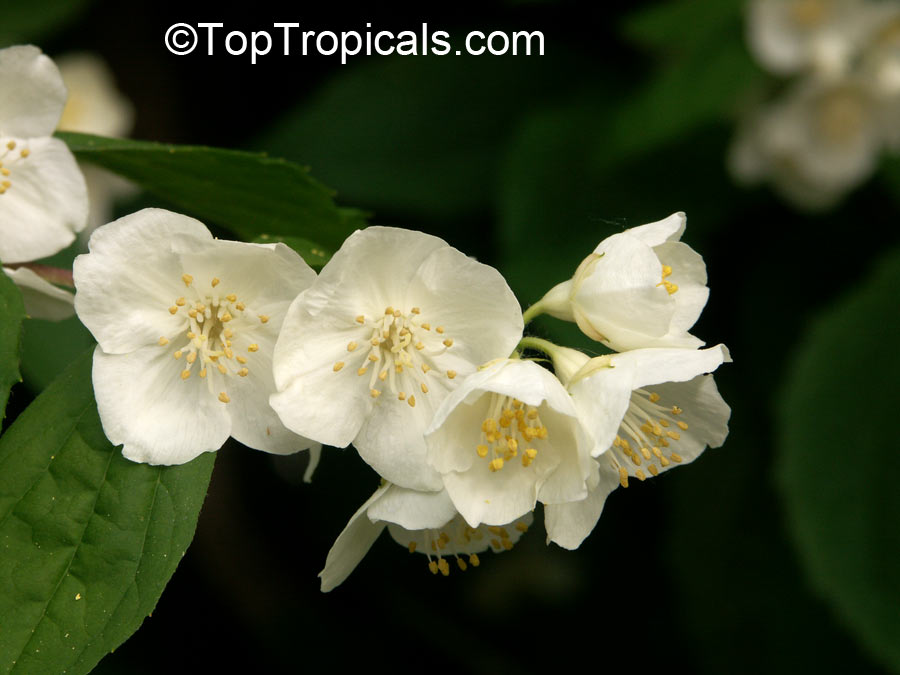Philadelphus sp. (Mock Orange)
Top Tropicals Plant Encyclopedia
Botanical name: Philadelphus sp.
Common name: Mock Orange
Family: Philadelphaceae
Origin: East Asia, North America










With its large, semi-weeping habit, Mock Orange (Philadelphus sp.) is a deciduous shrub that averages 5 to 10 feet tall and wide. The margins of its handsome ovate leaves are serrated and its bark is typically a gray-brown; in some species the stems and branches may be tinged with purple. In late Spring to early Summer, the plant is laden with fragrant, off-white to white flowers. Not only are these flowers attractive to gardeners, they attract butterflies and hummingbirds to your outdoor space.
For optimal health and growth, Mock Orange prefers full or partial sun, and soil that drains quickly. It is tolerant of average moisture in the soil, but will suffer if the spot is too wet. Avoid planting this shrub in soggy soil. Water moderately, generally only when the soil gets dry.
Container grown Mock Orange should be fertilized once a month with a general purpose fertilizer. If planted in the ground, a slow release fertilizer can be used for best results.
Mock Orange is cold hardy in USDA Zone 4-10. In regions with colder winters, this shrub is best grown in a pot, so it can be brought indoors for the winter or moved to a sheltered spot.
